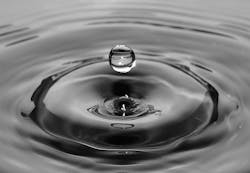Surface Water Reuse Program Expansion in Texas
In Missouri City, Texas, to meet drinking water demands planners are expanding the city’s Regional Surface Water Treatment Plant to slow down possible water shortages over the next 50 years.
According to public works director and city engineer Shashi Kumar, the $49 million plant is the largest capital project ever undertaken by the city.
“Water is going to be the next precious commodity,” Kumar said to the Community Impact Newspaper. “The Texas Water Development Board is pushing hard to conserve and have reuse strategies, like reusing wastewater. Technology is making that easier, and it is one of our main strategies.”
The expansion, beginning in 2019, will double the amount of potable water produced to 20 million gal per day. According to the Community Impact Newspaper, a future third phase will produce up to 33 million gal of drinking water per day by 2030.
According to Kumar, during the process of producing the water, between 500,000 to 1 million gal per day of wastewater is generated.
According to the newspaper, the shift to use more surface water instead of groundwater is one of the strategies the city is taking as it continues to attract more people to the area. The city has partnered with 40 government and private groups on the plant. According to the newspaper, it takes 10 million gal per day of surface water from the Brazos River and treats it to produce potable, or drinking water.
After this expansion, two million gal of wastewater will be generated per day. The city plans to take some of that to reuse for purposes such as filling lakes and irrigating medians and other areas to conserve water.
The expansion is estimated to cost the city $20 million, according to the newspaper. City officials say all costs for the surface water treatment plant, expansion and operations are paid for by the pumpage fee charged to all members of the city’s Groundwater Reduction Plan. the fee is $1.72 per 1,000 gal of groundwater pumped for non-converted municipal utility districts and $2.20 per 1,000 gal for converted MUDS.
The strategy for water conservation includes surface water, reusing water the wastewater treatment plant and commercial credits of 5 billion gal per year form the water already reused. According to Kumar, the city has already bank $6 million in credits.
